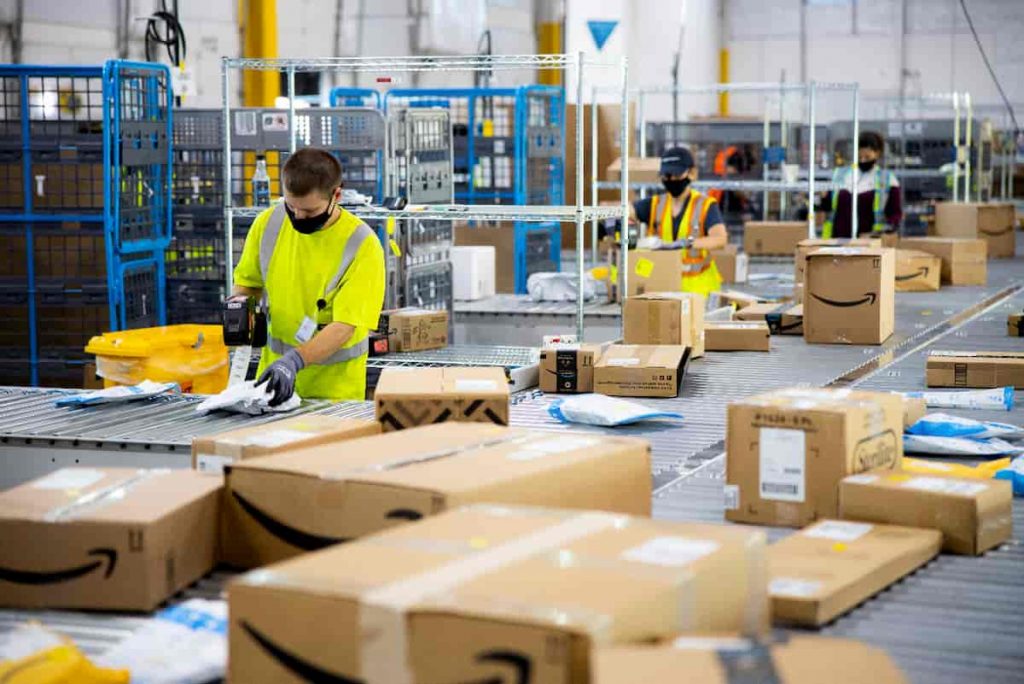Amazon’s (NASDAQ: AMZN) position as one of big tech’s most profitable companies is highlighted by the firm’s staggering revenue per minute as more people shift to digital products necessitated by the pandemic.
Data acquired and calculated by Finbold indicates that the eCommerce giant generated $837,350 in revenue per minute for Q1 2021, representing a growth of 44.04% from the $582,200 recorded during the same period in 2020. Among seven selected top tech companies, Apple (NASDAQ: AAPL) recorded the second-highest revenue per minute at $691,200, a drop of 1.96% from Q1 2020’s $708,300.
Elsewhere, electric vehicle manufacturer Tesla’s (NASDAQ: TSLA) exponential rise in 2020 is reflected in the revenue per minute which has the highest growth rate among the tech companies. As of Q1 2021, the revenue was $80,170, to represent a growth of 71.42% from Q1 2020s $46,200.
Picks for you
Big tech reaps from pandemics digital shift
The revenue for the companies shows the gains made during the coronavirus pandemic. The health crisis pushed more activities online and these companies were well-positioned to benefit as they sold services people needed.
Big tech firms have earned a reputation of being in the right place at the right time. Notably, the pandemic accelerated digital transformation in education, health care, remote work, and e-commerce, boosting the companies profitability.
Big tech also offered products that helped people find an alternative to physical working and socializing. Before the pandemic, the companies already had an established market in entertainment, eCommerce, social networking, and cloud computing. With most of the companies recording growth in 2021, it’s an indicator the gains made amid the pandemic have been retained.
However, Amazon remains a peculiar case with the firm thriving from the increased online shopping for most people. Besides shopping, the company’s other products like Amazon Web Services and Amazon Prime were at the center of helping people navigate the health crisis.
With continued record volume of orders, Amazon resorted to strengthening its base. For example, the company has spent billions on building its logistics operations and data centers to cater to increasing demand.
Furthermore, amid the increased demand, Amazon also registered a surge in sellers. Our previous research shows that the Amazon marketplace onboarded 295,000 new sellers in 2021 as of March 21, equivalent to 3,734 new third-party sellers added daily.
For the case of Tesla, the company recorded the highest growth rate thanks to a rapid expansion of the electric vehicle market over the last year. Tesla is leading the way in pushing electric vehicles to the mainstream backed by a ready market in countries across Europe and China.
Governments in these regions are rapidly moving towards eliminating dependence on fossil fuels. The growth was also reflected in the EV manufacturer’s stock value that surged to record highs over the last year.
Explaining Apple’s slight correction in revenue per minute
Although Apple has diversified revenue sources, the slight plunge in revenue per minute potentially reflects the company’s delayed entry into the 5G market.
The pandemic halted Apple’s 5G phone production as factories were closed due to social distancing measures. Additionally, the supply chain disruption also had an impact on the company’s profitability. However, despite the slight correction, the revenue is still significant compared to competitors.
In general, the company also used the pandemic as an opportunity to streamline and strengthen their revenue. Some companies resorted to cutting costs on expenses like travel, entertainment, and marketing.
With widespread lockdowns as a means of controlling the pandemic, employees were compelled to work from home with Google saving $1 billion annually in the process.
The balance sheet for big tech is very impressive, an aspect has led to questions in regards to their market dominance. There are calls to eliminate market monopoly by these firms considering that they offered almost every product needed to navigate the pandemic.
As part of consolidating their market position, the big five tech companies or FAMGA (Facebook, Apple, Microsoft, Google, and Amazon) financing of unique equity deals between 2019 and 2020 spiked by 69.78%. Our previous research revealed that the financing grew from $7.28 billion to $12.36 billion during the period.





